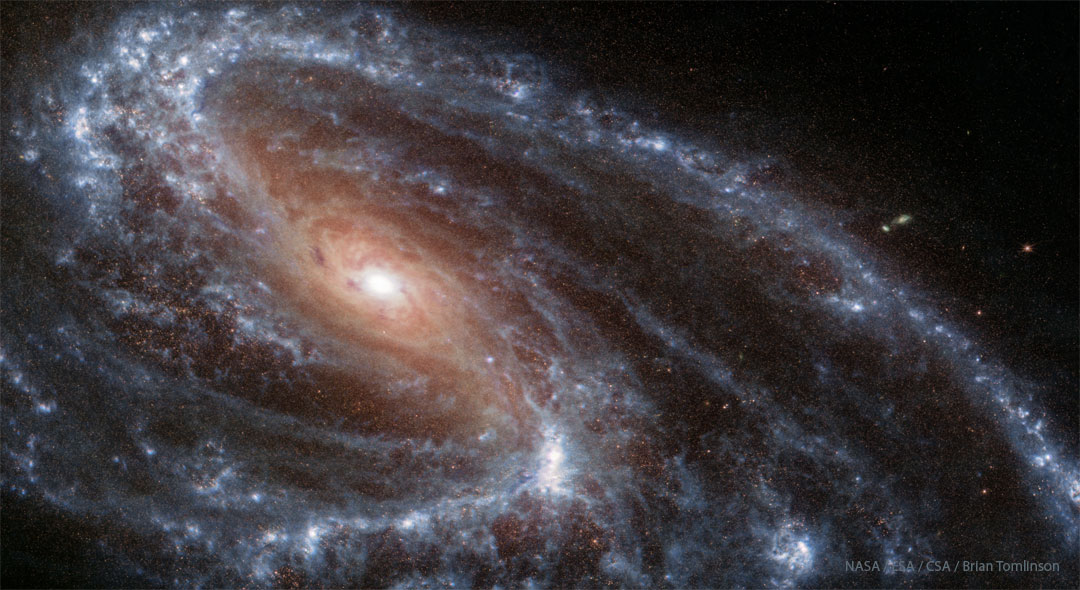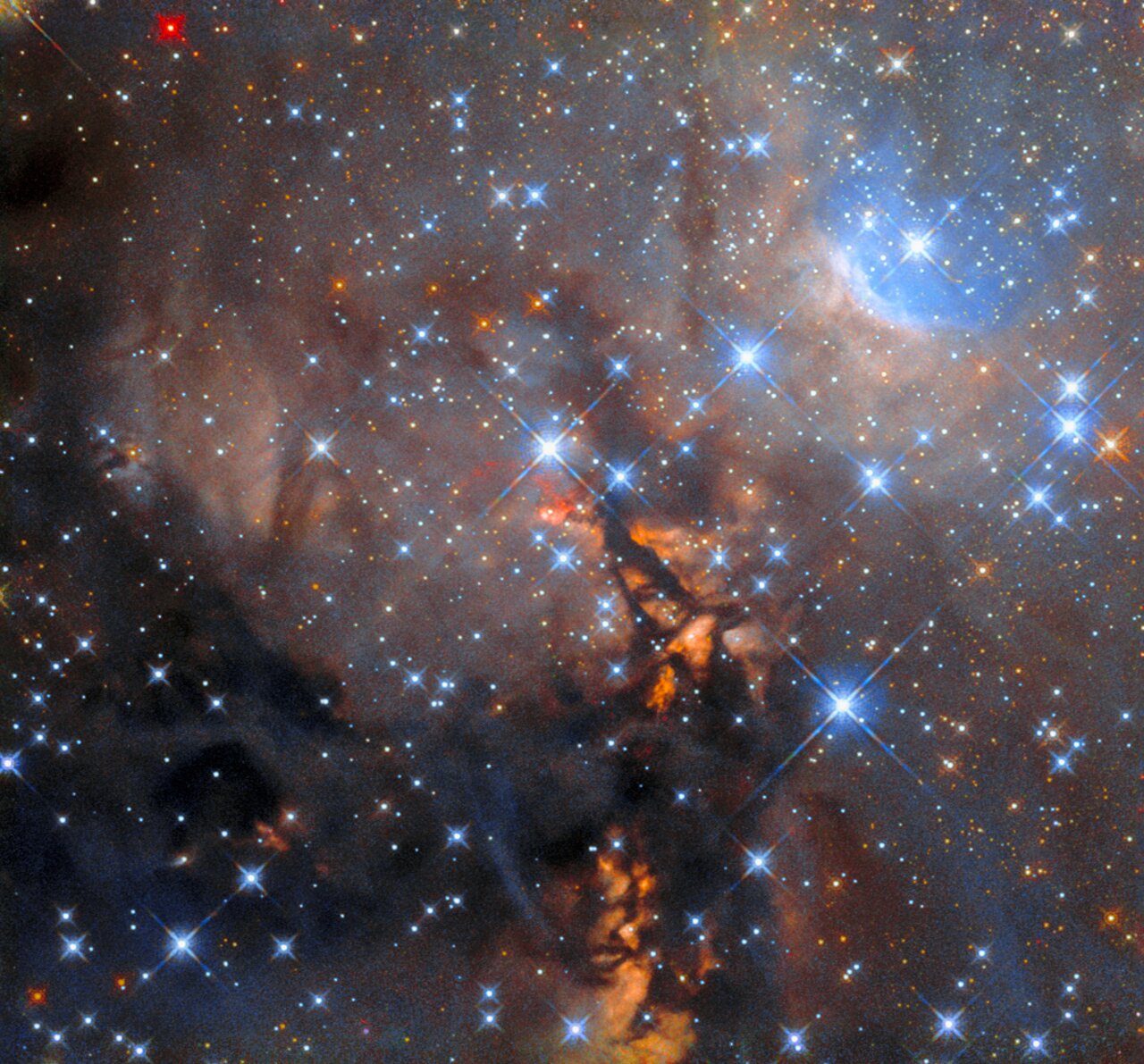Blog
Rodney Jones (born August 30, 1956) is an American jazz guitarist who worked with Jaki Byard, Chico Hamilton, Dizzy Gillespie, and Lena Horne and as a bandleader. He is cited as a jazz guitarist who uses modern quartal harmony. Jones is a faculty member at Juilliard.
more...Robert Dennis Crumb (/krʌm/; born August 30, 1943) is an American cartoonist who often signs his work R. Crumb. His work displays a nostalgia for American folk culture of the late 19th and early 20th centuries, and satire of contemporary American culture.
Crumb contributed to many of the seminal works of the underground comix movement in the 1960s, including being a founder of the first successful underground comix publication, Zap Comix, contributing to all 16 issues. He was additionally contributing to the East Village Other and many other publications, including a variety of one-off and anthology comics. During this time, inspired by psychedelics and cartoons from the 1920s and 1930s, he introduced a wide variety of characters that became extremely popular, including countercultural icons Fritz the Cat and Mr. Natural, and the images from his Keep On Truckin’ strip. Sexual themes abounded in all these projects, often shading into scatological and pornographic comics. In the mid-1970s, he contributed to the Arcade anthology; following the decline of the underground, he moved towards biographical and autobiographical subjects while refining his drawing style, a heavily crosshatched pen-and-ink style inspired by late 19th- and early 20th-century cartooning. Much of his work appeared in a magazine he founded, Weirdo (1981–1993), which was one of the most prominent publications of the alternative comics era. As his career progressed, his comic work became more autobiographical.
In 1991, Crumb was inducted into the comic book industry’s Will Eisner Comic Book Hall of Fame. He was married to cartoonist Aline Kominsky-Crumb, with whom he frequently collaborated. Their daughter Sophie Crumb has also followed a cartooning career.
Robert Crumb was born August 30, 1943, in Philadelphia to Catholic parents of English and Scottish descent, spending his early years in West Philadelphia and Upper Darby. His father, Charles Vincent Crumb, authored the book Training People Effectively.
more...McKinley Howard “Kenny” Dorham (August 30, 1924 – December 5, 1972) was an American jazz trumpeter, singer, and composer. Dorham’s talent is frequently lauded by critics and other musicians, but he never received the kind of attention or public recognition from the jazz establishment that many of his peers did. For this reason, writer Gary Giddins said that Dorham’s name has become “virtually synonymous with underrated.” Dorham composed the jazz standard “Blue Bossa“, which first appeared on Joe Henderson‘s album Page One.
Dorham was one of the most active bebop trumpeters. He played in the big bands of Lionel Hampton, Billy Eckstine, Dizzy Gillespie, and Mercer Ellington and the quintet of Charlie Parker. He joined Parker’s band in December 1948. He was a charter member of the original cooperative Jazz Messengers. He also recorded as a sideman with Thelonious Monk and Sonny Rollins, and he replaced Clifford Brown in the Max Roach Quintet after Brown’s death in 1956. In addition to sideman work, Dorham led his own groups, including the Jazz Prophets (formed shortly after Art Blakey took over the Jazz Messengers name). The Jazz Prophets, featuring a young Bobby Timmons on piano, bassist Sam Jones, and tenorman J. R. Monterose, with guest Kenny Burrell on guitar, recorded a live album ‘Round About Midnight at the Cafe Bohemia in 1956 for Blue Note. During his final years Dorham suffered from kidney disease, from which he died on December 5, 1972, aged 48.
more...Usually, density waves of gas, dust, and newly formed stars circle a spiral galaxy‘s center and create a nearly symmetric galaxy. The differences between M66’s spiral arms and the apparent displacement of its nucleus are all likely caused by previous close interactions and the tidal gravitational pulls of nearby galaxy neighbors M65 and NGC 3628. The galaxy, featured here in infrared light taken by the James Webb Space Telescope, spans about 100,000 light years, lies about 35 million light years distant, and is the largest galaxy in a group known as the Leo Triplet. Like many spiral galaxies, the long and intricate dust lanes of M66 are seen intertwined with the bright stars and intergalactic dust that follow the spiral arms.

Michael Joseph Jackson (August 29, 1958 – June 25, 2009 Gary, IN) was an American singer, songwriter, dancer, and philanthropist. Known as the “King of Pop“, he is regarded as one of the most significant cultural figures of the 20th century. During his four-decade career, his contributions to music, dance, and fashion, along with his publicized personal life, made him a global figure in popular culture. Jackson influenced artists across many music genres. Through stage and video performances, he popularized complicated street dance moves such as the moonwalk, which he named, as well as the robot.
The eighth child of the Jackson family, Jackson made his public debut in 1964 with his older brothers Jackie, Tito, Jermaine, and Marlon as a member of the Jackson 5 (later known as the Jacksons). Jackson began his solo career in 1971 while at Motown Records. He became a solo star with his 1979 album Off the Wall. His music videos, including those for “Beat It“, “Billie Jean“, and “Thriller” from his 1982 album Thriller, are credited with breaking racial barriers and transforming the medium into an art form and promotional tool. He helped propel the success of MTV and continued to innovate with videos for the albums Bad (1987), Dangerous (1991), HIStory: Past, Present and Future, Book I (1995), and Invincible (2001). Thriller became the best-selling album of all time, while Bad was the first album to produce five US Billboard Hot 100 number-one singles.
From the late 1980s, Jackson became a figure of controversy and speculation due to his changing appearance, relationships, behavior, and lifestyle. In 1993, he was accused of sexually abusing the child of a family friend. The lawsuit was settled out of civil court; Jackson was not indicted due to lack of evidence. In 2005, he was tried and acquitted of further child sexual abuse allegations and several other charges. The FBI found no evidence of criminal conduct by Jackson in either case. In 2009, while he was preparing for a series of comeback concerts, This Is It, Jackson died from an overdose of propofol administered by his personal physician, Conrad Murray, who was convicted in 2011 of involuntary manslaughter for his involvement in Jackson’s death. His death triggered reactions around the world, creating unprecedented surges of internet traffic and a spike in sales of his music. A televised memorial service for Jackson, held at the Staples Centerin Los Angeles, was viewed by more than an estimated 2.5 billion people globally.
Jackson is one of the best-selling music artists of all time, with estimated sales of over 400 million records worldwide. He had 13 Billboard Hot 100 number-one singles (third highest of any artist in the Hot 100 era) and was the first artist to have a top-ten single on the Billboard Hot 100 in five different decades. His honors include 15 Grammy Awards, six Brit Awards, a Golden Globe Award, and 39 Guinness World Records, including the “Most Successful Entertainer of All Time”. Jackson’s inductions include the Rock and Roll Hall of Fame (twice), the Vocal Group Hall of Fame, the Songwriters Hall of Fame, the Dance Hall of Fame (making him the only recording artist to be inducted) and the Rhythm and Blues Music Hall of Fame.
more...Doug Raney (August 29, 1956 – May 1, 2016) was an American jazz guitarist. He was the son of jazz guitarist Jimmy Raney.
Raney was born in New York City. He began to play the guitar when he was 14, beginning with rock and blues. He was given lessons by guitarist Barry Galbraith and became more interested in jazz. When he was 18, he played at a club in New York with pianist Al Haig. In 1977, he accompanied his father, jazz guitarist Jimmy Raney, in a duo. They toured Europe, and then Doug Raney moved to Copenhagen, Denmark. When he was 21, he recorded his first album as a leader, Introducing Doug Raney, for SteepleChase in 1977. Beginning in 1979, he recorded several albums with his father.
During his career, he worked with Chet Baker, George Cables, Joey DeFrancesco, Kenny Drew, Tal Farlow, Tomas Franck, Dexter Gordon, Johnny Griffin, Billy Hart, Hank Jones, Clifford Jordan, Duke Jordan, Jesper Lundgaard, Red Mitchell, Adam Nussbaum, Niels-Henning Ørsted Pedersen, Horace Parlan, Bernt Rosengren, and Jesper Thilo. Raney died of heart failure at the age of 59 on May 1, 2016.
more...Dinah Washington (born Ruth Lee Jones; August 29, 1924 – December 14, 1963) was an American singer and pianist, one of the most popular black female recording artists of the 1950s. Primarily a jazz vocalist, she performed and recorded in a wide variety of styles including blues, R&B, and traditional pop music, and gave herself the title of “Queen of the Blues”. She was a 1986 inductee of the Alabama Jazz Hall of Fame, and was inducted into the Rock and Roll Hall of Fame in 1993.
Ruth Lee Jones was born in Tuscaloosa, Alabama, to Alice and Ollie Jones, and moved to Chicago as a child. She became deeply involved in gospel music and played piano for the choir in St. Luke’s Baptist Church while still in elementary school. She sang gospel music in church and played piano, directing her church choir in her teens and was a member of the Sallie Martin Gospel Singers. When she joined the Sallie Martin group, she dropped out of Wendell Phillips High School. She sang lead with the first female gospel singers formed by Sallie Martin, who was co-founder of the Gospel Singers Convention. Her involvement with the gospel choir occurred after she won an amateur contest at Chicago’s Regal Theaterwhere she sang “I Can’t Face the Music”
more...Charles Parker Jr. (August 29, 1920 – March 12, 1955), nicknamed “Bird” or “Yardbird“, was an American jazz saxophonist, band leader and composer. Parker was a highly influential soloist and leading figure in the development of bebop, a form of jazz characterized by fast tempos, virtuosic technique, and advanced harmonies. He was a virtuoso and introduced revolutionary rhythmic and harmonic ideas into jazz, including rapid passing chords, new variants of altered chords, and chord substitutions. Primarily a player of the alto saxophone, Parker’s tone ranged from clean and penetrating to sweet and somber.
Parker acquired the nickname “Yardbird” early in his career on the road with Jay McShann. This, and the shortened form “Bird”, continued to be used for the rest of his life, inspiring the titles of a number of Parker compositions, such as “Yardbird Suite“, “Ornithology“, “Bird Gets the Worm”, and “Bird of Paradise”.
Parker was an icon for the hipster subculture and later the Beat Generation, personifying the jazz musician as an uncompromising artist and intellectual rather than just an entertainer.
Charles Parker Jr. was born in Kansas City, Kansas, at 852 Freeman Avenue, and raised in Kansas City, Missouri, near Westport and later, in high school, near 15th and Olive St., to Charles Parker Sr. and Adelaide “Addie” Bailey, who was of mixed Choctaw and African-American background. He attended Lincoln High School in September 1934, but withdrew in December 1935, just before joining the local musicians’ union and choosing to pursue his musical career full-time.Parker’s life took a turn for the worse in March 1954 when his three-year-old daughter Pree died of cystic fibrosis and pneumonia. He attempted suicide twice in 1954, which once again landed him in a mental hospital. On March 12, 1955, while visiting his friend, the “jazz baroness” Nica de Koenigswarter, Charlie Parker died. The coroner cited pneumonia as the cause, and estimated Parker’s age at fifty-five or sixty. He was only thirty-four His childhood sweetheart and future wife, Rebecca Ruffin, graduated from Lincoln High School in June 1935.
more...
The protostellar object OH 339.88-1.26, which lies 8 900 light-years from Earth in the constellation Ara, lurks in this dust-filled image from the NASA/ESA Hubble Space Telescope. Winding lanes of dark dust thread through this image, which is also studded with bright stars crowned with criss-crossing diffraction spikes. The dark vertical streak at the centre of this image hides OH 339.88-1.26, which is an astrophysical maser. A maser — which is an acronym for “microwave amplification by stimulated emission of radiation” — is essentially a laser that produces coherent light at microwave wavelengths. Such objects can occur naturally in astrophysical situations, in environments ranging from the north pole of Jupiter to star-forming regions such as the one pictured here. This image comes from a set of Hubble observations that peer into the hearts of regions where massive stars are born to constrain the nature of massive protostars and test theories of their formation. Astronomers turned to Hubble’s Wide Field Camera 3 to explore five intermediate-mass protostars at infrared wavelengths. The Hubble observations were supported by other state-of-the-art observatories including ALMA, the Atacama Large Millimeter/submillimeter Array. ALMA is composed of 66 moveable high-precision antennas which can be arranged over distances of up to 16 kilometres on a plateau perched high in the Chilean Andes. Further data were contributed by the Stratospheric Observatory For Infrared Astronomy (SOFIA), which is a telescope that — until recently — operated out of a converted 747 aircraft. [Image Description: The field is field with hundreds of bright stars. They are primarily blue in colour, with scattered smaller stars visible in yellow/orange. The background is dominated by cloudy grey dust, with permeating regions of dark black and orange.]

Daniel Peter Seraphine (born August 28, 1948) is an American drummer, record producer, theatrical producer, and film producer. He is best known as the original drummer and a founding member of the rock band Chicago, a tenure which lasted from February 1967 to May 1990. Daniel Peter Seraphine was born in Chicago to John and Mary Seraphine. The family lived in the Dunningneighborhood on Chicago’s northwest side. He started playing drums at the age of nine while attending St. Priscilla Catholic grade school. When he was 15 years old, Seraphine withdrew from Steinmetz High School. Outside of school he joined a local gang called the JPs.
more...Dr. Bhekizizwe Joseph Shabalala (28 August 1940 – 11 February 2020) was a South African singer and musician who was the founder and musical director of the choral group Ladysmith Black Mambazo.
Dr. Bhekizizwe Joseph Shabalala was born in the town of Ladysmith (eMnambithi district) in the KwaZulu-Natal region of South Africa. His parents, Jonathan Mluwane Shabalala and Nomandla Elina Shabalala, raised Joseph and his six siblings on a white-owned farm called Tugela. His father died in the late 1940s; Joseph, being the eldest, had to take care of the family. He left the farm, however, in 1958 to search for work in the nearby city of Durban.
During this time, he was spotted by a well-known group, the Durban Choir, after he delighted audiences with his smooth guitar playing and soprano voice. When he joined the choir, he attempted to teach them some of his new compositions, namely his first song “Nomathemba” (which was made into a play in 1995). They refused, and so he left them after only two years.
more...Kenneth Sidney “Kenny” Drew (August 28, 1928 – August 4, 1993) was an American-Danish jazzpianist.
Drew was born in New York City, United States, and received piano lessons from the age of five. He attended the High School of Music & Art in Manhattan. Drew’s first recording, in 1950, was with Howard McGhee, and over the next two years he worked in bands led by Buddy DeFranco, Coleman Hawkins, Lester Young, and Charlie Parker, among others. After a brief period with his own trio in California, Drew returned to New York, playing with Dinah Washington, Johnny Griffin, Buddy Rich, and several others over the following few years. He led many recording sessions throughout the 1950s, and in 1957 appeared on John Coltrane‘s album, Blue Train.
more...NGC 225 is an open cluster in the constellation Cassiopeia. It is located roughly 2,200 light-years from Earth. It is about 100 to 150 million years old. The binary fraction, or the fraction of stars that are multiple stars, is 0.52. At the 2022 Eldorado Star Party amateur astronomer Will Young, a member of the Astronomical Society of South East Texas, dubbed this open cluster to feature the “Halloween Cat” asterism. A subgroup of brighter stars in this cluster appear to delineate a cat with forward facing eyes, arched back, and raised tail. NGC 225, The Sailboat Cluster, and VDB4 appear to be interacting with each other. Blue starlight from the cluster reflecting off of the interstellar dust while some of the dusk appears to soften the glow of the young stars in the cluster.

more...
More Posts
- Naughty or Nice
- Cosmos NGC 7727
- Christopher Parkening
- Phineas Newborn Jr.
- Cecil Payne
- Clark Terry
- World Music Sauljaljui
- Daily Roots Roots Radics
- John Trudell Being Human
- Friday the 13th 2024
- Cosmos M51
- Joe Messina
- Ben Tucker
- Sonny Greer
- Daily Roots Scientist
- Flamenco Fridays Carlos Montoya
- Graffiti Human Suffering
- Dr Who Facts
- Cosmos M45
- Alex Acuña